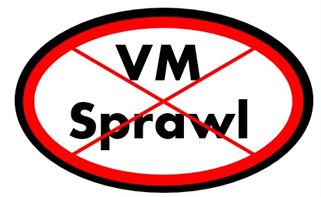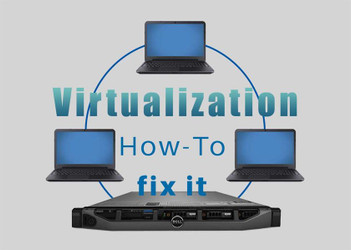How to Fix 5 Common Virtualization Issues
Posted by Dylan Kerling, Dell Certified Technician on 22nd Jan 2020
We receive calls daily from customers on a variety of tech topics. Questions frequently pertain to virtualization. Areas include VM Sprawl, Resource Distribution, Incorrect Application Placement, Congested Networks, and Licensing Compliance. Below are some tips to help you solve those issues.
VM Sprawl

VM Sprawl is nothing new to the industry. As companies grow, network demands grow, sometimes to a point where management can get out of control. Problems come from a variety of issues. The repercussions of VM Sprawl can include a lack of disk space and poor performance, depending on how VMs are allocated to your hosts.
To overcome VM Sprawl, start by auditing your VMs. Implement good naming standards. Without a good naming structure, it can be challenging to track down the owner of an unused VM.
Another good idea to combat VM Sprawl is to implement data policies by using thin provisioning, including clean up and optimization. Also, use snapshots around retention times. Fourth, incorporate VM archiving. Just make sure you can easily find the data. Finally, use a VM lifecycle management tool.
Resource Distribution
Using the proper distribution of VMs across your hosts can help with performance. At the same time, it can limit the number of resources available to others, hindering overall performance, if not spec'd out properly. To avoid this from happening, start by looking at your servers. Not all are good choices for virtualization.
Size up your server by looking at the number of cores and RAM in your system. A server with more cores on its processor typically means more speed and stability across your network of virtual machines. A system with limited resources will very quickly hit a performance wall depending on the number of VMs attempting to run on it. It is imperative that you ensure there are enough resources for everything you intend to run on it.
Incorrect Application Placement
Correct placement of applications in virtual networks is imperative to ensure that demands can reach the requested services. Putting too many data-intensive applications on virtual storage networks can cause issues. Gain an understanding of how each application works, and then distribute them across machines, physically and virtually, accordingly.
Congested Networks
 Congestion is a common and well-known problem with VMs. Before virtualization, one application on a single server would usually only use a fraction of the server’s network bandwidth. But today, you have multiple VMs residing on a virtualized server with each demanding network bandwidth. Most servers have only one NIC port that quickly becomes overwhelmed in the virtual environment. One way to resolve the congestion issue is by adding more NIC’s to the VM server. Another is by utilizing a VMware DRS cluster of ESXi hosts to balance VMs across multiple servers.
Congestion is a common and well-known problem with VMs. Before virtualization, one application on a single server would usually only use a fraction of the server’s network bandwidth. But today, you have multiple VMs residing on a virtualized server with each demanding network bandwidth. Most servers have only one NIC port that quickly becomes overwhelmed in the virtual environment. One way to resolve the congestion issue is by adding more NIC’s to the VM server. Another is by utilizing a VMware DRS cluster of ESXi hosts to balance VMs across multiple servers.
Licensing Compliance

Software is expensive, but it is something that is a must for all networks. However, cloning VMs without buying licensing for the OS and applications can open the door to litigation and penalties. Therefore, you must review and understand the licensing rules for each application you deploy. Second, don't forget terminal services licenses if needed. Third, keep track of how licensed software is being used, and ensure compliance. Fourth, have a software licensing backup plan. Put alternatives in place if key software vendors refuse to budge on their software licenses for desktop virtualization.

